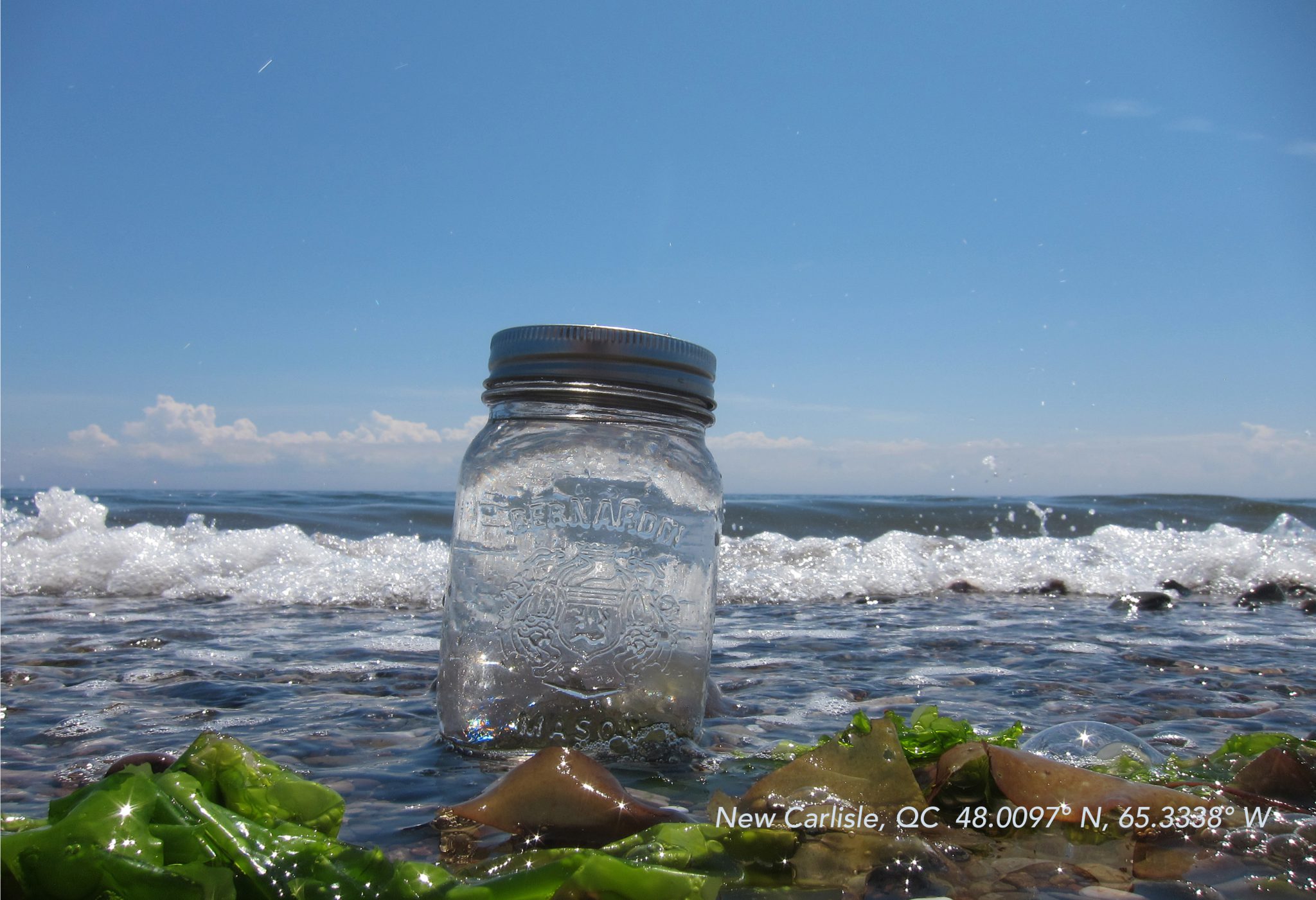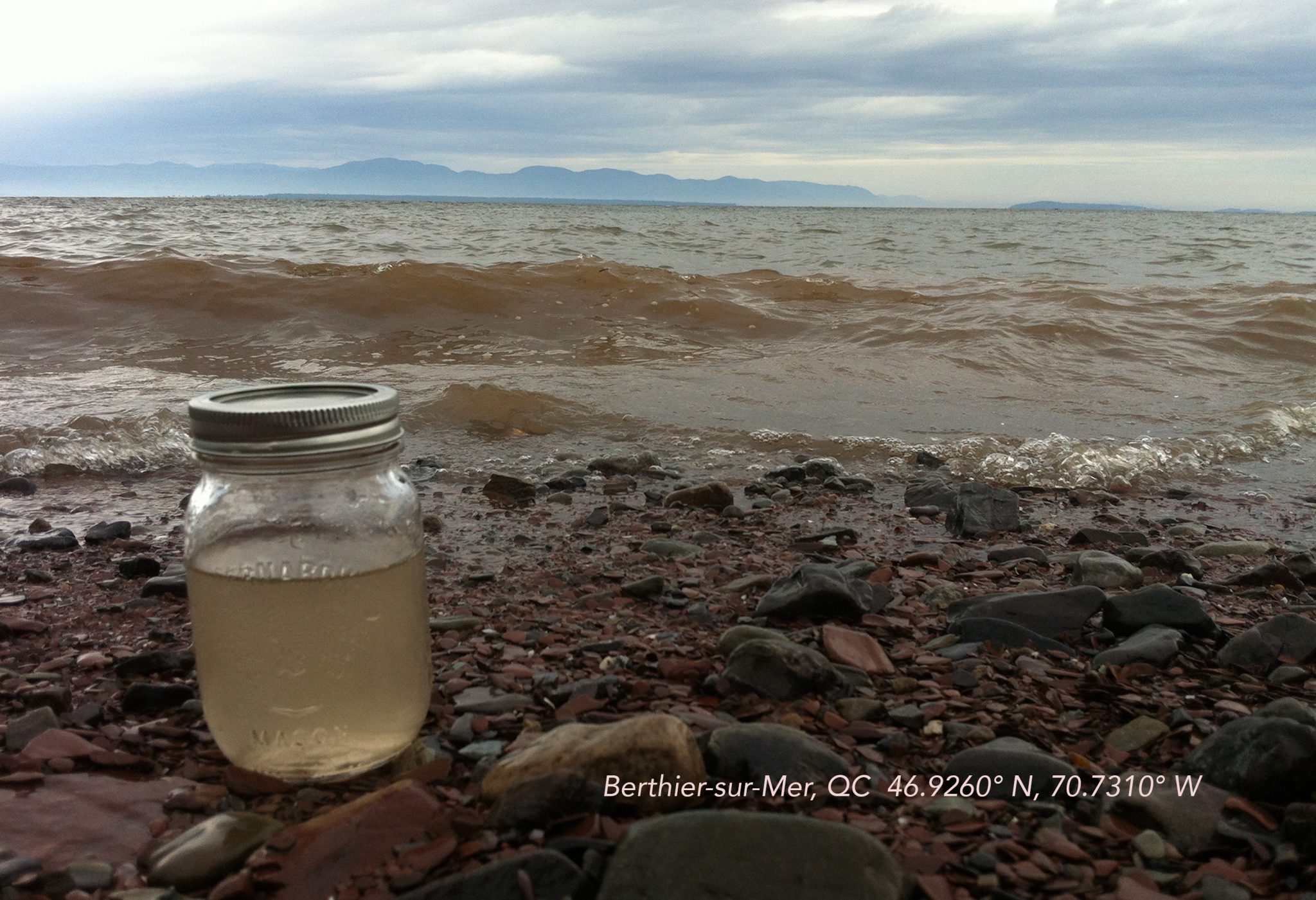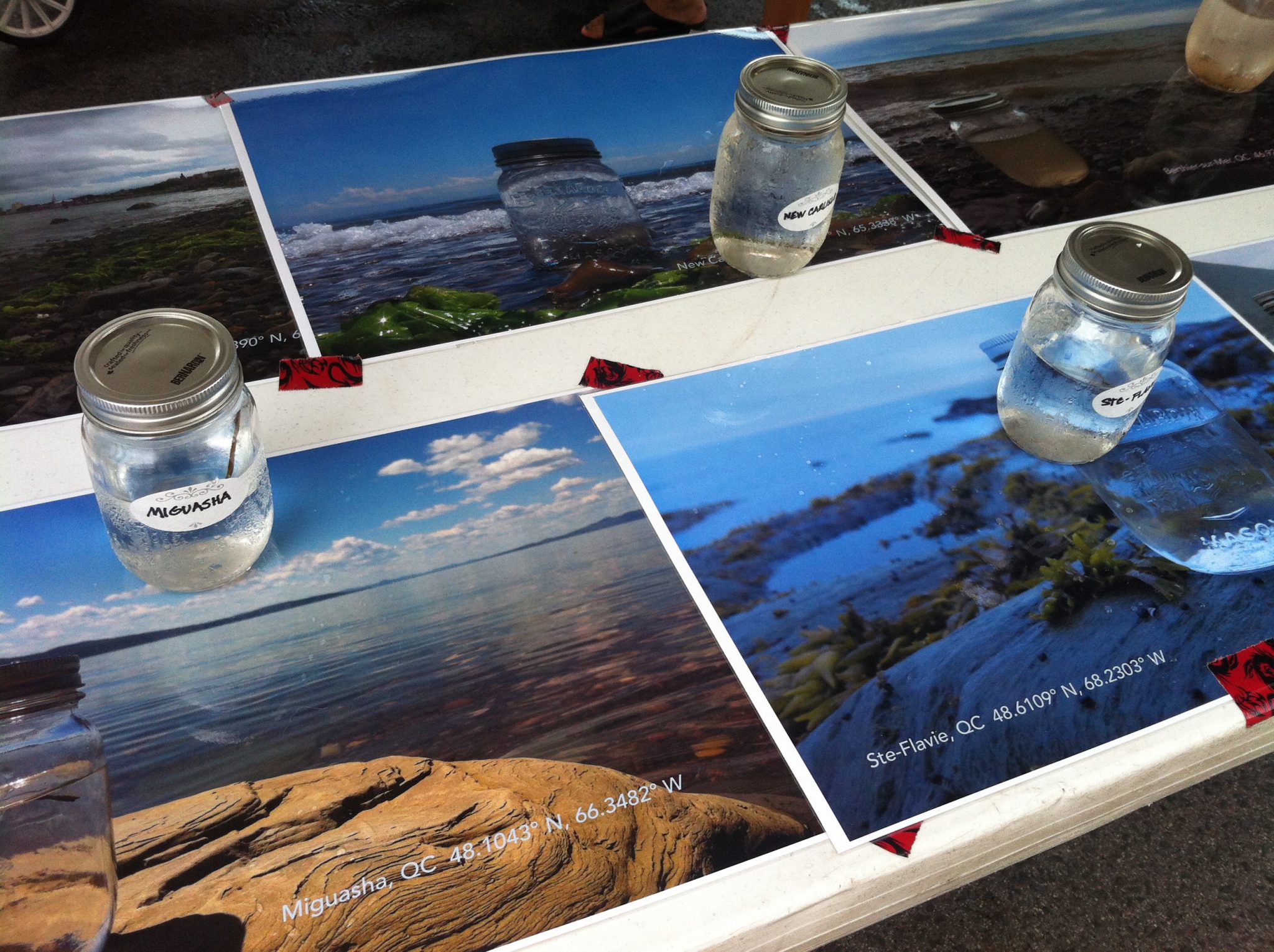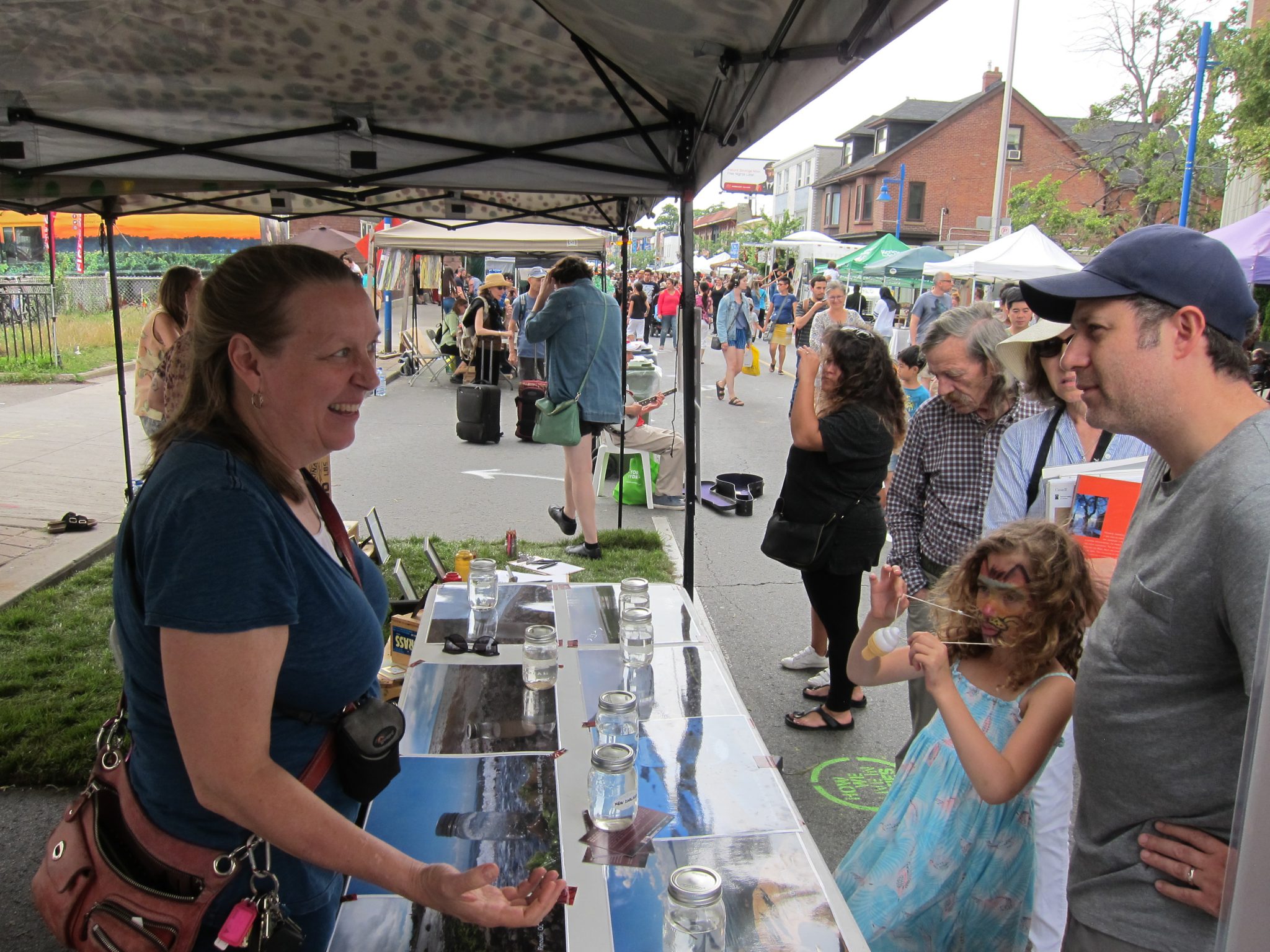
Gardens of Water (2017 – ) is an ongoing project about the water of the St. Lawrence River, which runs from fresh to salt, connecting the Great Lakes to the Atlantic Ocean and linking people and creatures all along the way. I am creating a series of photographs show jars of water at the sites of their sampling, geo-located with their longitude and latitude positions. With this project, I am considering current water questions: of pollution and bio-diversity, of humans’ impact on this watery world and the effects that other plants and creatures feel.
Gardens of Water has me feeling the limits of my disciplinary knowledge: were I — as I had planned — to have the water samples analyzed, I would not be well equipped to understand the significance of the results. Like so many members of the general public, I don’t know what I can do to safeguard our precious River and its waters. I am in the process of finding ways to connect art and science, aiming to indicate how both spheres of knowledge can enrich and support each other. I hope that the accessibility of the arts can enable myself and others to build a strong and loving relationship with the River. I am mindful of the words of Dan Egan, author of the acclaimed Death and Life of the Great Lakes (2017), who suggested in a CBC Radio interview that the most important thing we could do for the Lakes is help our children build a relationship with them.
I am planning an artist’s book based on the images and interdisciplinary research.

I took Gardens of Water to the ‘Big on Bloor’ Festival exploring How We Live in Cities, in July 2017, which took place at Dufferin and Bloor, above the undergrounded Garrison Creek. At the community festival, I invited passersby to consider our water’s trajectory From Grove to Gulf, or how Garrison Creek connects to the Gulf of the St. Lawrence River. Asking attendees to consider how we who live in cities can care for our waters as lovingly as we would our own gardens, I showed the mason jars of water samples that I took along the river and the photos from along the 1400-kilometre route. The installation also included a large map of the water’s route through Garrison Creek, under Dufferin Grove Park to Lake Ontario, and into the St. Lawrence River towards the Gulf and the Atlantic Ocean. I invited visitors to contribute their own water stories to the collective audio archive, too. Inspired by New Zealand, where the Whanganui River was recently granted the same rights as a person, I am collecting and sharing water stories for Walk in the Water / Marcher sur les eaux, an interactive art installation that invites us to re-imagine our precious Ontario/Quebec waterways and the future we hope for them.

